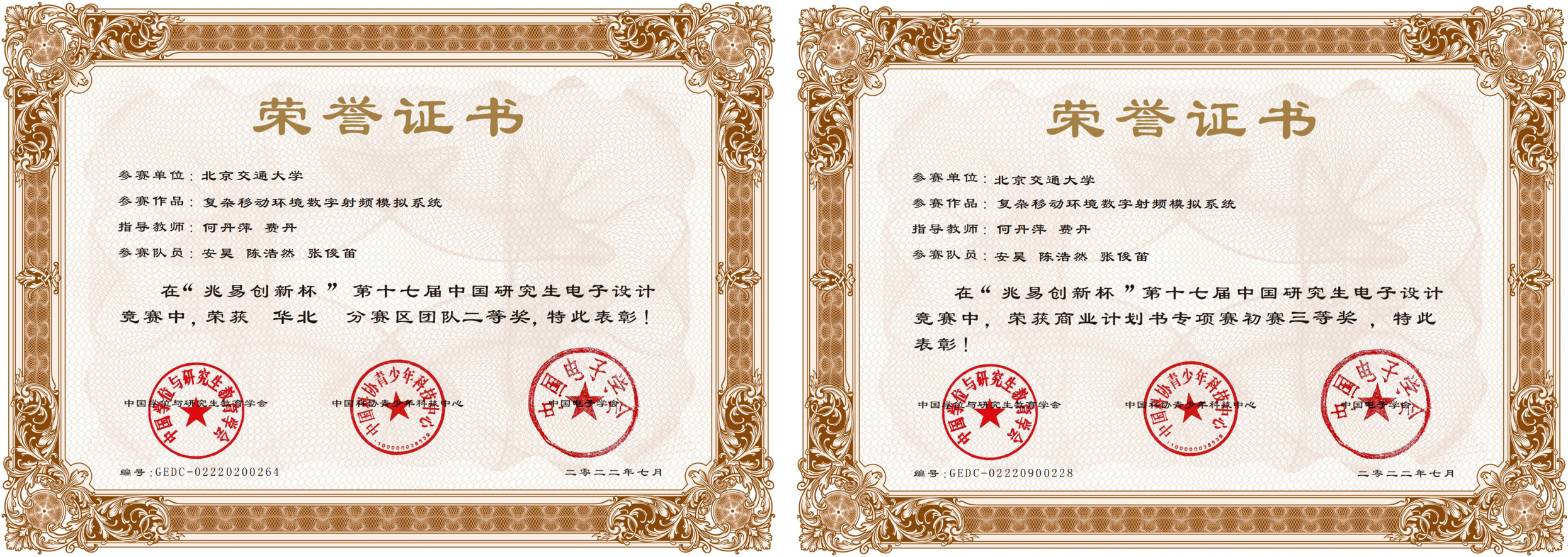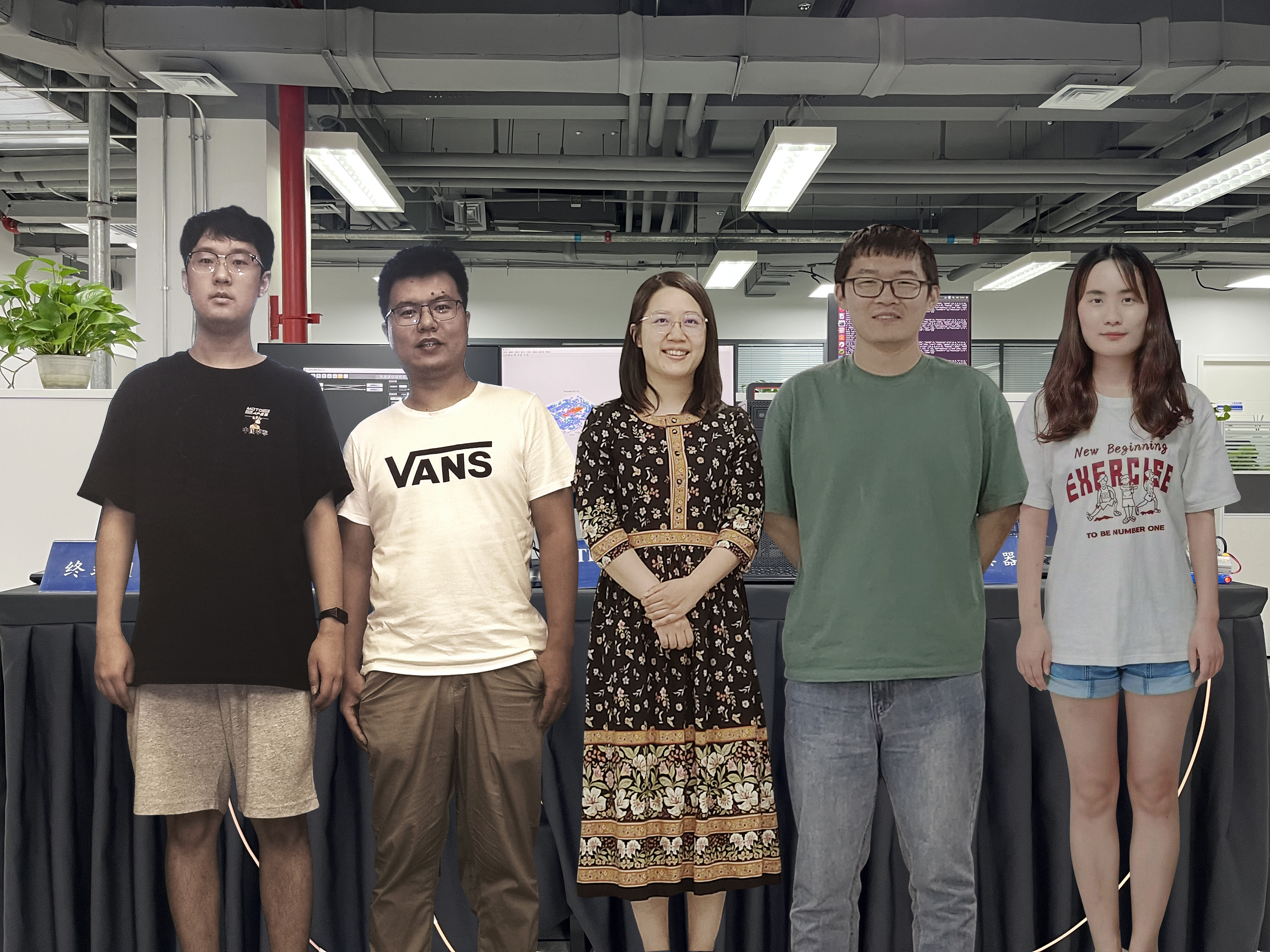First Prize in the National Final of the China Graduate Electronics Design Contest
Jan 12, 2023
 Ting's Team with supervisor Danping He
Ting's Team with supervisor Danping He
After nearly a month of fierce competition, 579 teams from 149 institutions across the country were selected to attend the final round from a field of 5,824 teams with over 16,000 participants. Liu Ting, Li Wenbin, and Duan Hongyu, the postgraduate students of our team, achieved a historic breakthrough: they won first place in the national finals of the technical competition and He Danping was awarded the outstanding supervisor. The prize-winning work, entitled "A millimeter wave radar-enabled electromagnetic-wave twin platform for autonomous driving", uses the ray-tracing simulation platform (http://www.raytracer.cloud/) as the core for the development of applications related to autonomous driving.
Introduction: Based on the background of the booming development of autonomous driving and policy support, the design addresses the key technology of multi-sensor sensing in autonomous driving by digital twinning. The design uses millimeter wave radar, LiDAR, and cameras to build a multi-sensor fused measurement system for the calibration of model parameters. Subsequently, the practical measurements and simulation results were calibrated to minimize errors using an in-house designed loss function, combined with calibration algorithms such as simulated annealing, to obtain reliable electromagnetic parameters for the material. After calibration, the ray-tracing platform is applied to simulate the propagation of radio waves in the millimeter wave, laser, and visible bands, applying the mainstream directional scattering model and the illumination model respectively.

 Applications based on the RT
Applications based on the RT
The design improves the efficiency of verification testing of multi-sensor systems for autonomous driving and solves the pain points of testing costs, with strong practicality as well as development prospects. The efficient and accurate simulation drives the breakthrough of autonomous driving technology to higher levels of automation. It has social value, providing a boost to industry standardization and the development of smart cities, and empowering the process of localization of key technologies.
 Measurement and simulation results
Measurement and simulation results
 Certificates of “Digital RF Simulation System for Complex Mobile Scenes”
Certificates of “Digital RF Simulation System for Complex Mobile Scenes”
An Hao, Zhang Jundi, and Chen Haoran's work “Digital RF Simulation System for Complex Mobile Scenes” won the second prize in the provincial competition. Furthermore, the RT-based applications were considered to be of significant commercial value, and the two teams won the second and third national prizes in the preliminary round of the commercial contest, respectively.
 Hao’s Team with supervisors Danping He and Dan Fei
Hao’s Team with supervisors Danping He and Dan Fei
Introduction: With the accelerated construction of digital China and smart city, the challenge of making invisible wireless channels visible has become an urgent issue. This project develops the research and application of wireless channel modeling for typical wireless communication scenarios. Combining ray tracing and a channel emulation platform, accurate and repeatable simulation of multipath fading wireless channels and the performance of communication systems can be achieved in one laboratory.
 Channel simulation and emulation platform based on RT
Channel simulation and emulation platform based on RT
About the contest: The China Postgraduate Electronic Design Competition (CPEDC) is a national-level competition directed by the Department of Degree Management and Postgraduate Education of the Ministry of Education of the People's Republic of China and co-organized by the Children & Youth Science Center, China Association for Science and Technology and the Chinese Institute of Electronics. It is also the most comprehensive, most numerous, most widely specialized, and most influential event among the "China Postgraduate Innovation and Practice Competitions".
